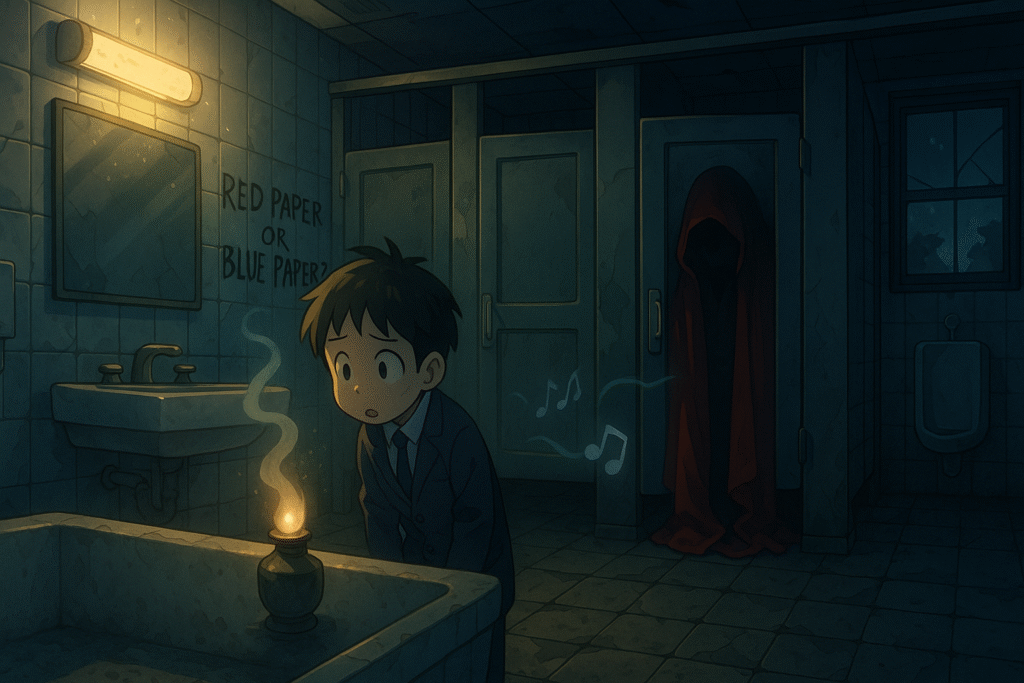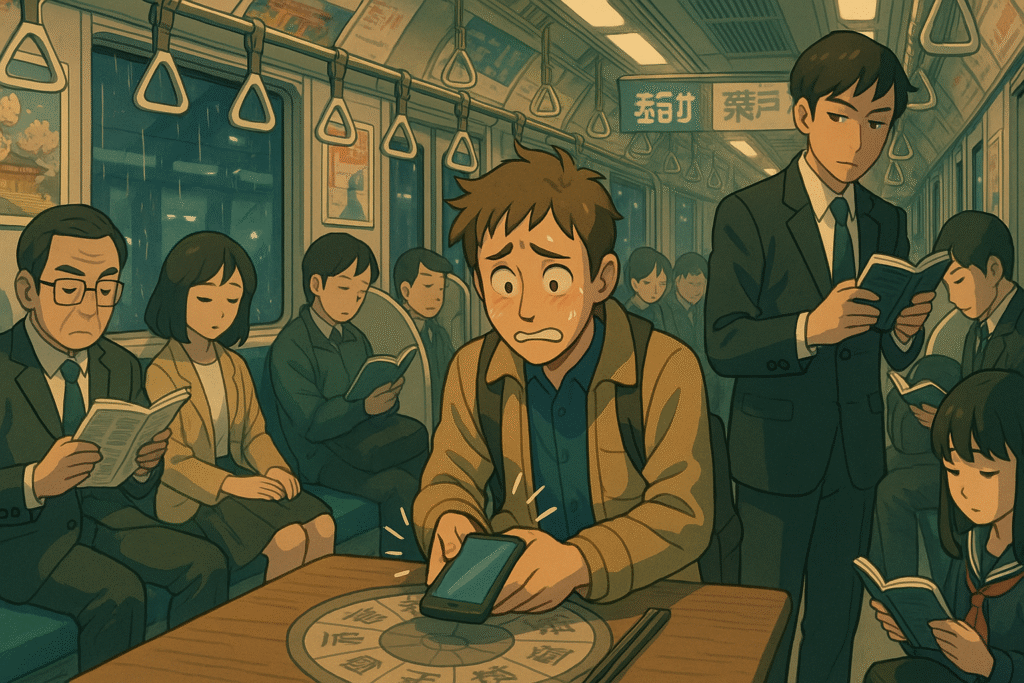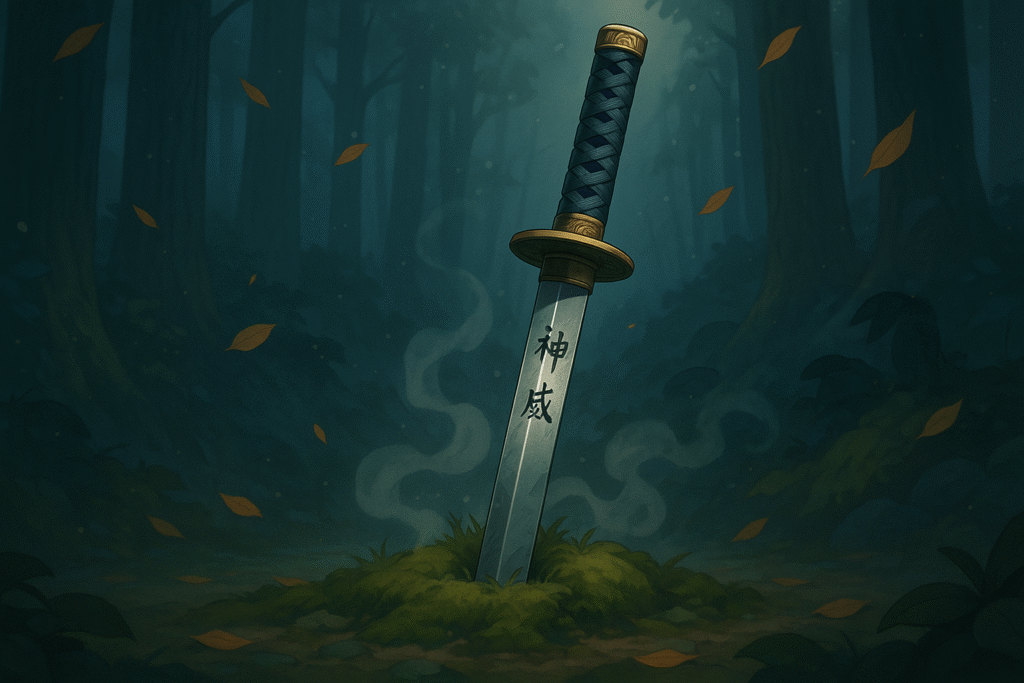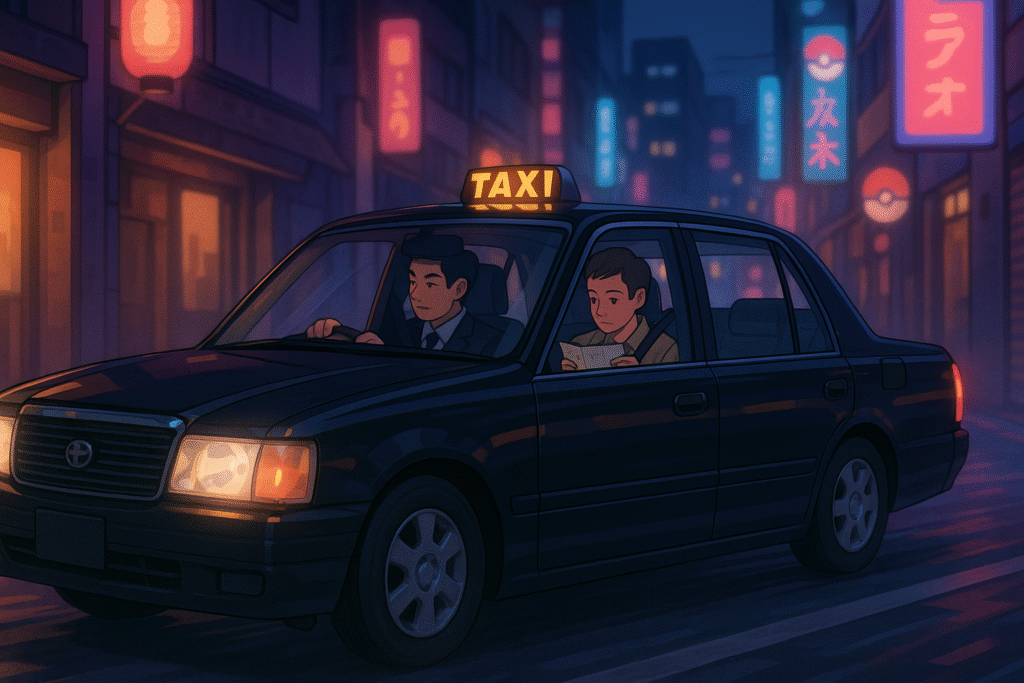Have you ever felt a strange presence in a public bathroom? In Japan, there’s a terrifying yokai that might be responsible for that eerie feeling. Let’s explore the bone-chilling Aka Manto story that continues to haunt Japanese school bathrooms to this day.
The Haunting Legend of Aka Manto
The Aka Manto story centers around one of Japan’s most enduring urban legends—a mysterious spirit that haunts school bathrooms, particularly older, less-frequented facilities. This red-cloaked phantom (赤マント, あかまんと) has terrorized Japanese schoolchildren for generations with its deadly question: “Red paper or blue paper?”
What makes the Aka Manto story particularly frightening is its inescapable nature. No matter which color you choose, the outcome is gruesome. This yokai (supernatural being) combines everyday anxiety with supernatural horror, creating a legend that has persisted for nearly a century.
The Origins of the Aka Manto Story
The Aka Manto story dates back to the 1930s, making it one of Japan’s oldest documented urban legends. While many newer toilet-based yokai like Toire no Hanako-san have emerged, the Aka Manto story maintains its prominent place in Japanese folklore.
Some scholars suggest the Aka Manto story reflects the anxieties of school life. The impossible choice between red and blue paper mirrors the pressure students face when confronted with difficult test questions or being called upon in class without knowing the answer.
How the Aka Manto Story Typically Unfolds
In the classic Aka Manto story, the encounter usually follows this chilling pattern:
- A student stays late at school and urgently needs to use the bathroom
- The only available facility is an older, isolated bathroom with traditional squat toilets
- Often, the fourth stall (associated with death in Japanese culture) is where the encounter occurs
- After finishing their business, the student discovers there’s no toilet paper
- A mysterious voice asks: “Do you want red paper or blue paper?”
What happens next in the Aka Manto story depends on the victim’s response:
- Choose red paper: You’ll be slashed violently until your blood creates a red cloak around your body
- Choose blue paper: All blood will be drained from your body, leaving you with a ghastly blue-tinged corpse
Regional Variations of the Aka Manto Story
Like many elements of Japanese folklore, the Aka Manto story has numerous regional variations. As we’ve explored in our article on the most common Japanese dialects, cultural tales often take on local characteristics depending on the region.
Some variations of the Aka Manto story include:
- Alternative questions: “Red vest or blue vest?” or “Red tongue or blue tongue?”
- Different color options: Red or white paper, with white resulting in a ghostly hand emerging to stroke the victim
- Various manifestations: Sometimes Aka Manto appears as a tall man with a sickly, bluish-white face; other times as a serial killer hiding in an adjacent stall
Just as we discovered while researching Akaname, the filth-licking yokai, these supernatural beings often serve as cultural symbols for common fears and anxieties.
Want to explore Japan’s culture?
Discover Japan’s rich culture, traditions, and hidden gems with our expertly crafted guides. Get insider tips on travel, food, and history. All for free!
The Visual Evolution of Aka Manto
Interestingly, the visual representation of Aka Manto has evolved with the Japanese language itself. In modern tellings of the Aka Manto story, the spirit wears a long, red hooded cloak (as “manto” now refers to a cape or cloak in contemporary Japanese).
However, in the 1930s when the Aka Manto story first appeared, “manto” referred to a shorter, sleeveless kimono jacket. This linguistic shift has transformed how different generations visualize this terrifying entity.
Can You Escape the Aka Manto?
The Aka Manto story typically offers little hope for escape. Clever attempts to outwit the spirit generally fail:
- Bringing your own toilet paper? It mysteriously vanishes.
- Choosing a different color? Results in an equally horrific fate.
- Saying “yellow paper”? You might be drowned in the toilet.
However, some versions of the Aka Manto story suggest that responding with “I don’t need any paper” might buy you enough time to escape the bathroom unharmed.
Understanding Japanese Folklore Through the Aka Manto Story
The Aka Manto story exemplifies how Japanese culture often personifies fears through yokai. Similar to how Japanese funeral traditions help people process grief, these supernatural tales provide a framework for understanding everyday anxieties.
The enduring popularity of the Aka Manto story, even as newer urban legends emerge, speaks to its powerful psychological resonance. For those interested in learning more about Japanese culture and language, understanding these folkloric elements provides valuable cultural context beyond simple vocabulary and grammar.
Want to Learn More About Japanese Culture and Language?
If you’re fascinated by Japanese folklore like the Aka Manto story, why not expand your knowledge by learning the language? Our Learn Japanese page offers free guides to help beginners master essential concepts and cultural nuances.
Frequently Asked Questions About the Aka Manto Story
What is Aka Manto?
Aka Manto is a malevolent spirit that haunts school bathrooms in Japanese folklore.
Where does the Aka Manto story take place?
The Aka Manto story typically takes place in older school bathrooms, particularly the fourth stall.
How old is the Aka Manto legend?
The Aka Manto story has been documented since the 1930s, making it nearly a century old.
Can you survive an encounter with Aka Manto?
According to some versions of the Aka Manto story, responding “I don’t need any paper” might allow you to escape unharmed.
Why is the Aka Manto story still popular today?
The Aka Manto story remains popular because it taps into universal anxieties about making impossible choices and the vulnerability one feels in bathroom settings.
Whether you’re interested in Japanese folklore, language learning, or cultural studies, the Aka Manto story provides a fascinating glimpse into how supernatural tales reflect societal concerns. If you enjoyed learning about this chilling yokai, be sure to check out our other articles on Japanese storytelling traditions like Rakugo and cultural celebrations like Shichi Go San.
Love Japan? Stay in the Loop!
Get the best of Japan straight to your inbox: language, culture & travel insights!




